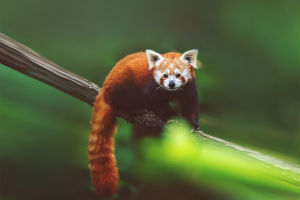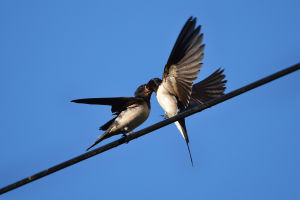Hey Lykkers, Have You Ever Really Noticed Rabbits?We see them in parks, on farms, or even as pets at home, but how much do we really know about these fast and fluffy creatures?
Rabbits are more than just adorable hoppers—they have fascinating survival skills, unique behaviors, and an impressive reproductive strategy that has made them one of the most widespread mammals on Earth. Today, let's hop into the world of rabbits and uncover some truly surprising facts!
Cute Animal Rabbits as Pets Video | Rabbit Farming in India | Indian Rabbit | ढेर सारे खरगोश
video by azad jain
A World Full of Rabbits
Rabbits belong to the Leporidae family and can be found almost everywhere, from dense forests to wide-open grasslands. Some species, like the European rabbit, have even spread across continents due to human introduction. Their ability to adapt to different environments has helped them thrive in the wild and even in urban areas. Despite their small size, they play a crucial role in the ecosystem, serving as a primary food source for many predators.
Born to Run: The Amazing Rabbit Anatomy
Speed is a rabbit's best defense. With strong hind legs built for sprinting and jumping, rabbits can quickly escape danger. Some species can reach speeds of up to 55 km/h (34 mph) in short bursts! Their large eyes are positioned on the sides of their heads, allowing them to detect threats from almost any direction. Even while sleeping, rabbits often keep their eyes slightly open to stay alert.
Another unique feature is their large ears. While they help detect predators, they also act as natural air conditioners. By increasing blood flow to their ears, rabbits can regulate body temperature, which is especially useful in hot climates.
Masters of Reproduction
Rabbits are famous for their ability to reproduce quickly. A female rabbit, or doe, can give birth multiple times a year, with each litter containing 4 to 12 babies, known as kits. Their short pregnancy, lasting around 30 days, ensures rapid population growth. In some places, this has led to ecological problems. For example, in Australia, introduced rabbits have multiplied so fast that they have disrupted the natural balance, damaging vegetation and affecting native species.
Smart and Social Creatures
Contrary to the idea that rabbits are simple animals, they are highly intelligent and social. In the wild, some species, like the European rabbit, live in groups called colonies, where they build complex underground tunnels for protection. These burrows, known as warrens, can have multiple entrances and exits, allowing rabbits to escape predators efficiently.
Rabbits also communicate through body language. A thump of their hind legs warns others of nearby danger, while a relaxed posture signals safety. Even pet rabbits express emotions—some even show affection by gently nudging or licking their owners!
Their Biggest Threats
Despite their survival skills, rabbits face many dangers. In the wild, predators such as foxes, eagles, and snakes constantly hunt them. However, one of their greatest threats comes from diseases. Viral infections like rabbit hemorrhagic disease and myxomatosis have wiped out large populations in certain areas. These diseases spread rapidly, making them a significant concern for conservationists and pet owners alike.
Rabbits and Us
For centuries, rabbits have been a part of human life. In some cultures, they symbolize good luck and prosperity. Many people keep them as pets due to their gentle nature, but owning a rabbit requires responsibility. They need a proper diet, space to move around, and regular care to stay healthy and happy.
What’s Your Rabbit Story?
So, Lykkers, have you ever had a rabbit as a pet? Or maybe you've seen wild rabbits in action? These fluffy creatures may look soft and harmless, but their world is full of surprises. Next time you spot a rabbit, take a moment to appreciate how nature has shaped them into the ultimate survivors.
Let’s keep the conversation going! Share your rabbit stories in the comments—we’d love to hear them!


